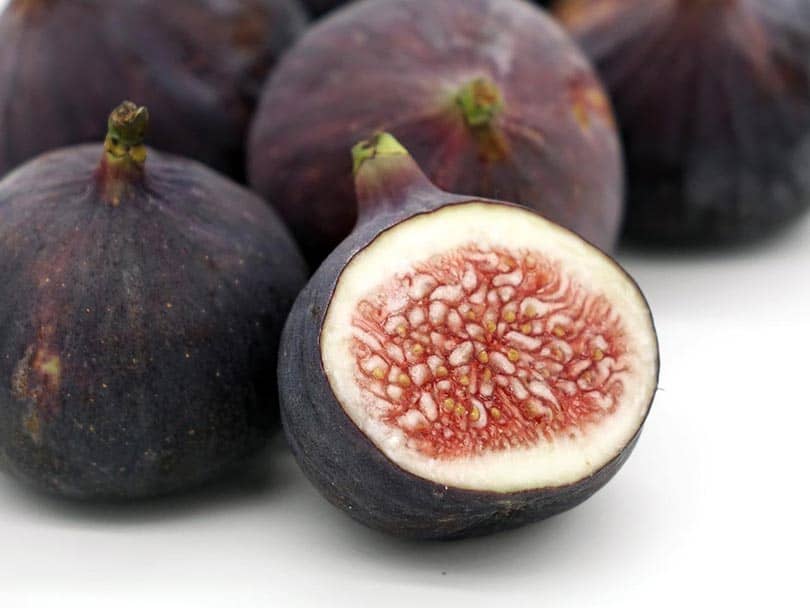Figs can be a delicious treat that’s healthy for you—and if you have a dog, you might be thinking about eating one. However, it’s important to do your research before adding figs into your dog’s diet. That is because they have some great health benefits and many dogs love the taste, but they also carry some risks. Doing your research and being careful will help you make sure that your dog doesn’t have an adverse reaction.
Is Fruit Healthy for Dogs?
If you’ve ever looked at the back of your dog food labels, you might be surprised to see the number of things that aren’t meat back there. Some of those ingredients might be fillers and preservatives that aren’t needed for your dog to be healthy. But most experts agree that dogs need some plant matter in their diet to be safe. Whole grains, healthy fruits, and yummy vegetables are all part of a good canine diet. They add fiber, vitamins, and other nutrients that dogs benefit from.
Along with whatever is in your dog’s food, you can also supplement with small amounts of fruit. Most dogs don’t need much—a few tablespoons of fruit are plenty each day. Depending on your dog’s taste, they might love most, some, or no fresh fruit, but if your dog likes fruit, it can be a healthy snack. However, it’s important to pick the fruit you introduce carefully. Some fruits are safer and healthier than others.
Benefits of Figs
There are lots of reasons to consider feeding your dog figs. These plants are high in potassium and fiber, making them a great choice for dogs with high blood pressure or digestive issues. They are also generally low-calorie but filling, so many owners will include them in an overweight dog’s diet. Many dogs love the taste of figs because they are so sweet.

Risks of Figs
Although fruit is a generally healthy treat, there are some reasons to be cautious when feeding your dog figs. Two enzymes in figs—ficin and ficusin—can cause harmful reactions in dogs. This can lead to upset stomachs, vomiting, inflammation, and allergy-like symptoms. Dose matters, so feeding your dog more than one or two figs increases the likelihood of poor reactions. However, these vary from dog to dog—some dogs can eat several servings without symptoms, while other dogs can’t eat figs at all. If these symptoms stay mild and pass quickly, you can usually treat them at home, but if they become severe, you should seek vet care.
Another risk comes if you have a fig plant in your home. The leaves of this plant can be incredibly harmful to dogs. That’s because their sap irritates your dog’s skin and stomach. Fig poisoning can lead to symptoms ranging from diarrhea and vomiting to rashes, abdominal pain, and skin irritation. In some cases, it can lead to death, so if you suspect your dog has come in contact with a fig plant, you should seek vet care.
Tips for Feeding Figs Safely
If you do decide to feed your dog figs, there are some precautions you can take. The most common way to feed figs to your dog is by using dried figs as a treat or chopped up and mixed in with your dog’s food. One or two dried figs is plenty. You can also feed your dog one or two tablespoons of chopped fresh figs. Don’t feed your dog figs more than two times a week.
If you are introducing figs to your dog’s diet for the first time, start with a small amount. Give your dog a small taste of fig and watch for reactions, and then in a day or two try a bigger amount. That way, you can tell if your dog is sensitive. Be careful not to overfeed your dog and keep figs in a safe space.
Conclusion
As you can see, figs can be healthy for dogs, but you need to be careful not to overfeed as they can be toxic in high amounts. If you are worried about feeding your dog figs, it might be best to try a different fruit instead, like apples, blueberries, peaches, or bananas. Even if you feed your dog the fruit, stay away from the rest of the plant as fig leaves and stems can be fatal to dogs.
Featured Image Credit: 1195798, Pixabay














